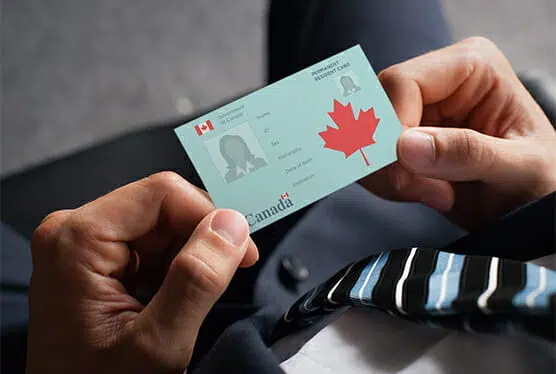Canada has specific immigration programs designed to enable individuals with different skills, education, and work experience to settle in Canada and contribute to the Canadian economy. If you’ve been thinking about settling in Canada, did you know that there are many ways you can apply to become a PR? You may have heard of Express Entry and “PNP,” but there are other options as well that may be a better fit for your unique case. In this article, we will provide an overview of various immigration programs that allow you to move to Canada. We will also provide links to resources and tools that can help you get started with your application.

Apply for PR through an immigration program
Apply for PR through an immigration program
Canada has many federal and provincial immigration programs that can let you move and settle in Canada as a PR. Some of these programs are:
1.Express Entry
One of the most sought after and popular ways to immigrate to Canada, mainly due to its simplicity and quick processing timelines. Express Entry is ideal for skilled individuals who want to settle in Canada permanently. It has three immigration streams:
1.Express Entry
One of the most sought after and popular ways to immigrate to Canada, mainly due to its simplicity and quick processing timelines. Express Entry is ideal for skilled individuals who want to settle in Canada permanently. It has three immigration streams:
- Federal Skilled Worker (FSW) program: For applicants with significant foreign work experience and/or a high level of education.
- Federal Skilled Trades Program (FSTP): For skilled trades people.
- Canadian Experience Class (CEC): For foreign nationals who have been working in Canada for a period of at least one year.
What are the most important steps to take when considering applying for Canadian Permanent Residency?
What are the most important steps to take when considering applying for Canadian Permanent Residency?
First test your language skills:
English and French are the two official languages of Canada. To apply for any permanent residency program, you will have to submit the results of an official English or French test. Your English/French level has to be equivalent to the minimum CLB/NCLC level required for the program you are applying for-
CLB – Canadian Language Benchmarks (for English)
NCLC – Niveaux de Compétence Linguistique Canadiens (for French)
When taken an English/French test you will be tested in 4 skills: speaking, reading, writing and listening.
CLB – Canadian Language Benchmarks (for English)
NCLC – Niveaux de Compétence Linguistique Canadiens (for French)
When taken an English/French test you will be tested in 4 skills: speaking, reading, writing and listening.
The tests accepted for permanent residency application are:
English
CELPIP–General: Canadian English Language Proficiency Index Program (General–LS test is not accepted)
IELTS–General Training: International English Language Testing System (Academic test is not accepted)
French
TEF Canada: Test d’évaluation de français (TEF Études, Naturalisation, Carte de résident or the Québec versions of the test are not accepted)
TCF Canada: Test de connaissance du français (TCF, DAP, ANF, Carte de résident or the Québec versions of the test are not accepted)
Get your foreign educational credential(s) assessed:
If you obtained your education outside Canada, you will need to submit along with your application an Educational Credential Assessment (ECA) for immigration purposes. The ECA is used to verify that your foreign degree, diploma, or certificate (or other proof of your credential) is valid and equal to a Canadian one.
Find the NOC for your occupation:
NOC (National Occupational Classification) is the system used by IRCC to classify jobs in Canada.
For immigration purposes, the main job groups are:
- Skill Type 0 (zero): management jobs
- Skill Level A: professional jobs that usually call for a degree from a university
- Skill Level B: technical jobs and skilled trades that usually call for a college diploma or training as an apprentice
- Skill Level C: intermediate jobs that usually call for high school and/or job-specific training
- Skill Level D: labour jobs that usually give on-the-job training
A skill level is primarily based on the nature of education and training required to be employed in an occupation.
Jobs with NOC Skill Type 0, A or B are considered “skilled” occupations.
DISCLAIMER
Globalvisanet.com is a visa and immigration services company. We offer advisory services on visa and immigration options. We are not part of any government and department immigration. We don’t provide any type of job immigration of any destination.
Note: The information provided in this article is general, is subject to frequent changes and does not constitute legal advice. For specific immigration legal advice that you can rely on, please contact us.
Note: The information provided in this article is general, is subject to frequent changes and does not constitute legal advice. For specific immigration legal advice that you can rely on, please contact us.


